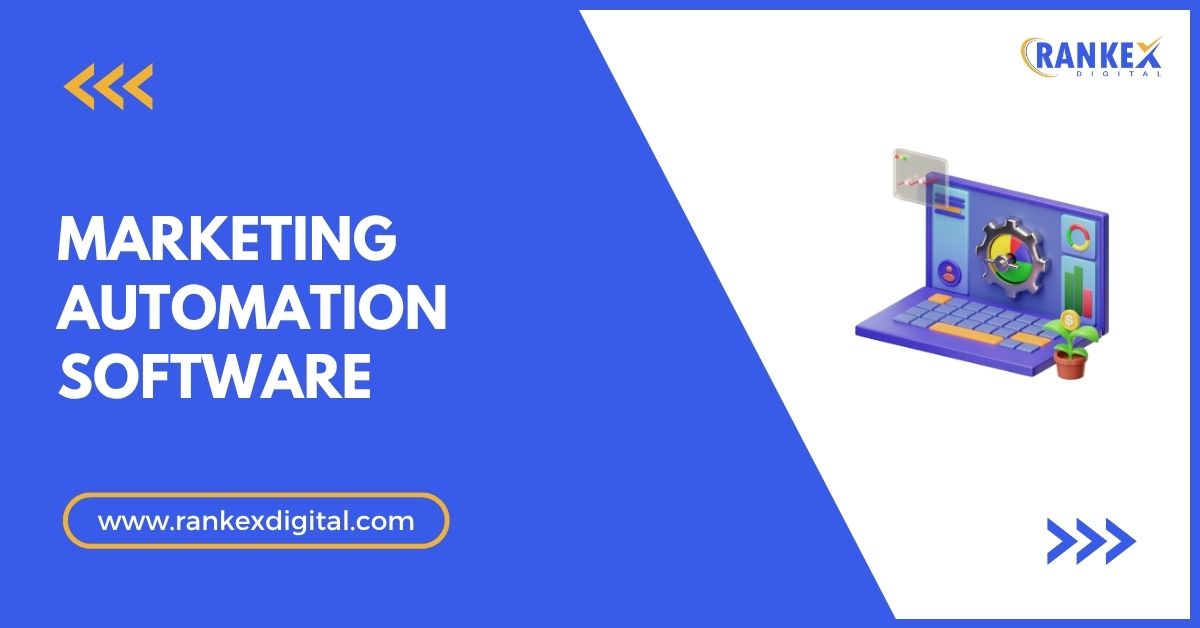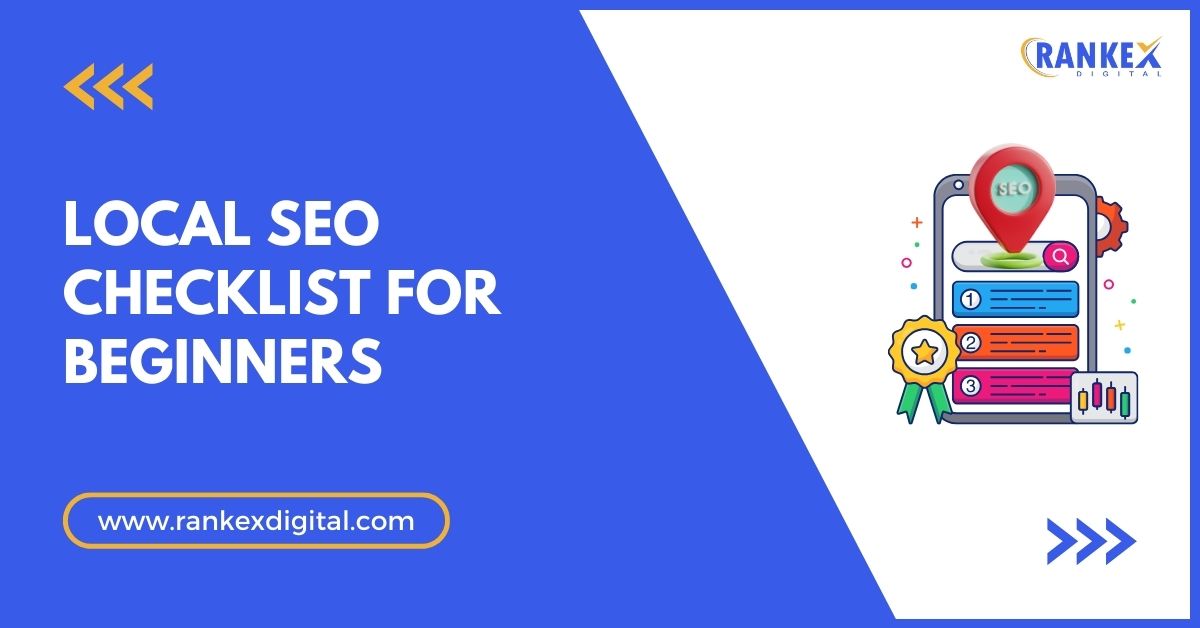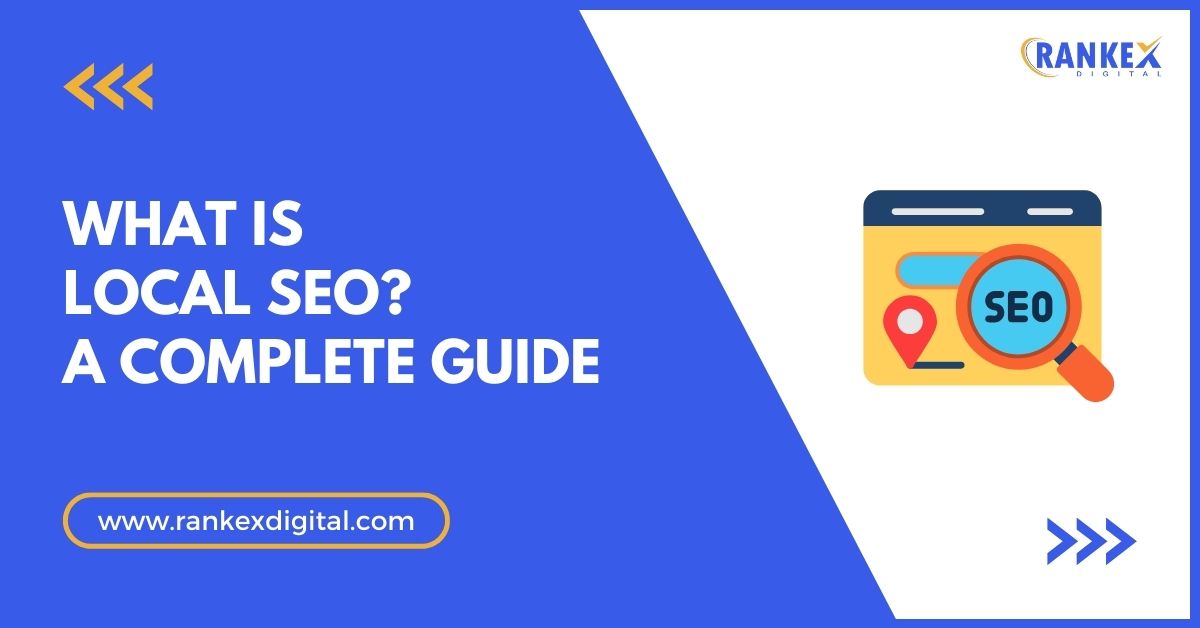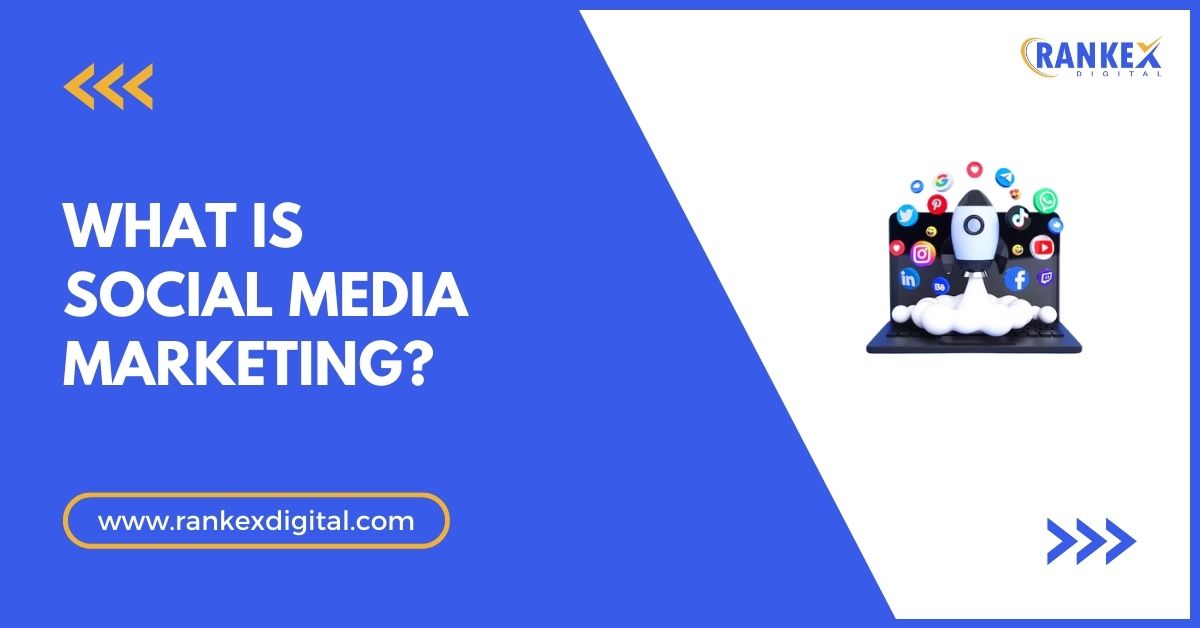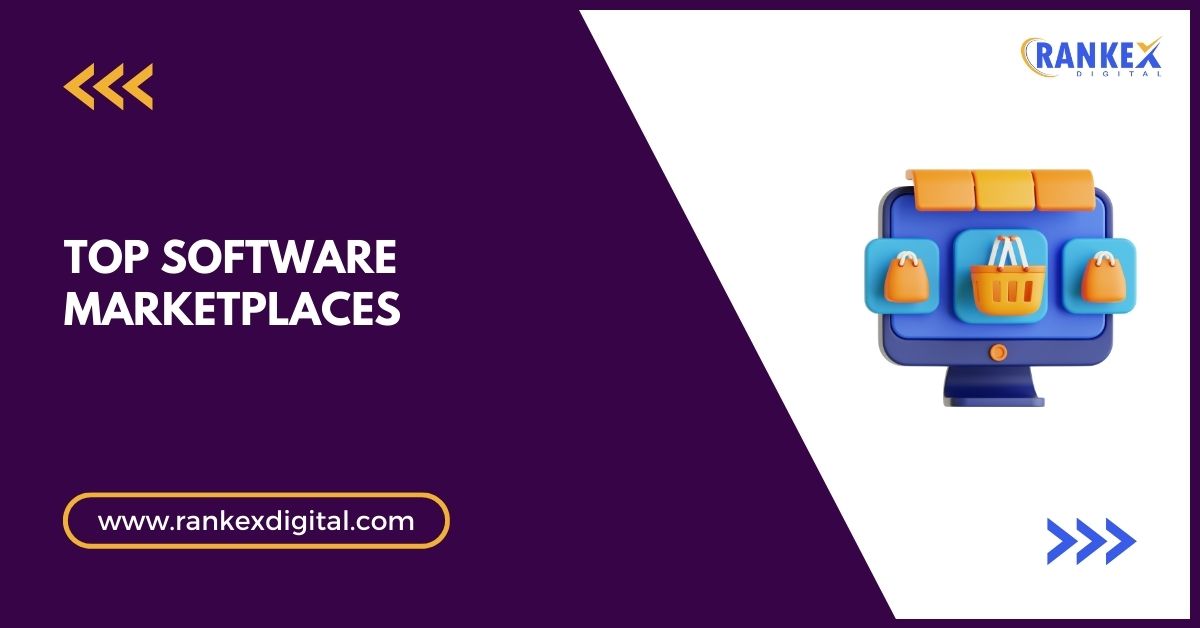Marketing automation software handles the tedious stuff — the follow-ups you forget to send, the cart abandonment emails that slip through cracks, the birthday messages you mean to write.
While you’re plotting strategy or sleeping, your email tool sends perfectly timed messages based on what people do, not what you guess they might want.
The real payoff isn’t time saved — it’s money captured. That customer who abandoned their cart at 2 AM gets nudged at 6 AM when they check their email over coffee. The subscriber who hasn’t purchased in 90 days receives an escalating win-back series.
Every automated touchpoint captures revenue you’d otherwise miss.
Table of Contents
What matters when choosing marketing automation
Visual builders that make sense
Nobody has time to code email marketing workflows. You need to see customer journeys like a map — where they enter, which paths they take, and why they leave.
Drag-and-drop sounds basic until you’re building complex sequences at midnight and grateful you don’t need a developer.
The channels your customers use
Email alone died years ago. Your automation needs to hit customers where they live — SMS for urgency, push for engagement, social for discovery. Disconnected tools create disconnected customer experiences.
Segmentation for all customers
“Dear customer” emails belong in 2010. Dynamic segments update themselves — big spenders get VIP treatment, bargain hunters see sales first, and new customers follow different paths than loyalists. Your tool should segment smarter than you could manually.
Testing that proves ROI
Your gut instinct loses to data every time. Test everything — subject lines, send times, entire campaign strategies. But track what matters: revenue per recipient, not vanity metrics. Open rates don’t pay bills.
Integration without engineering degrees
Your automation platform needs to talk to your store, CRM, and analytics without three developers and six weeks of setup. Pre-built connectors beat “robust API access” — check if they sync inventory levels, not just email addresses.
Pricing that scales without surprises
Some software charges per contact, others per send. SMS credits hide in fine print. “Enterprise features” are locked behind paywalls. Calculate your bill at 5x current size — growth shouldn’t bankrupt you.
The Best Marketing Automation Software in 2025
Check out these tools to automate your workflows:
1. Omnisend
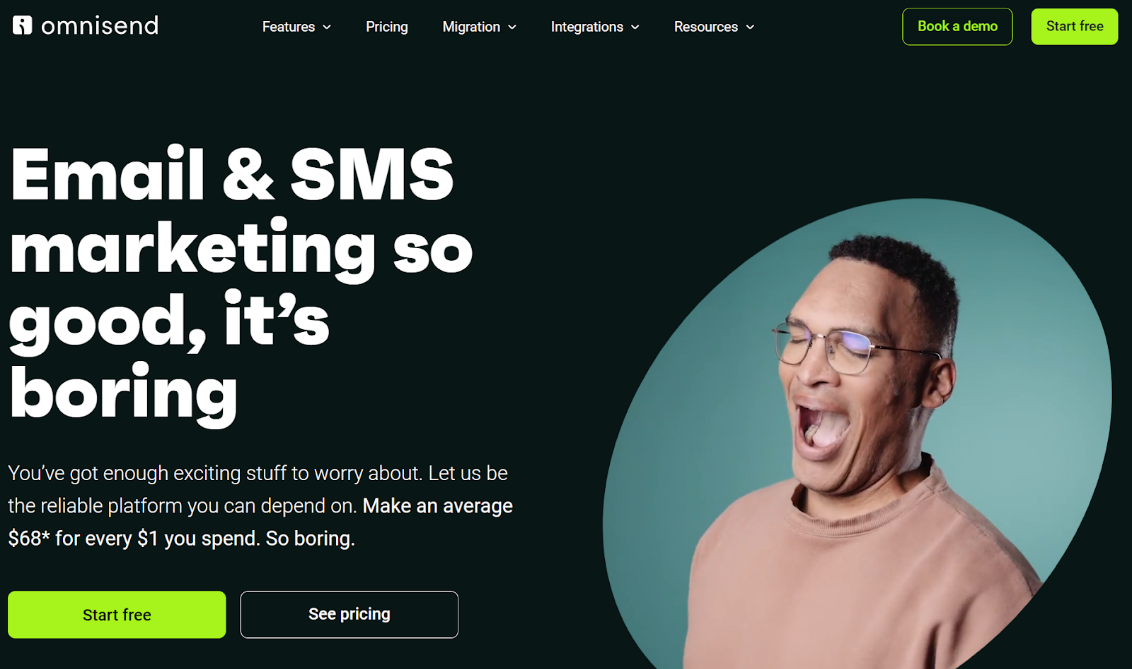
Omnisend gets ecommerce. While others bolt on shopping features, it provides pre-built automations for welcome series, cart recovery, and win-back campaigns, and pre-built segments for appropriate targeting.
You can customize the timing of your flows, add SMS and push channels, and adjust triggers (such as customers who bought three times in 24 hours).
The multi-channel approach works. Add SMS to any email flow without rebuilding. Push notifications join the mix seamlessly.
Your abandoned cart sequence hits email, then SMS two hours later, then a push notification the next morning. Same message, three chances to convert.
Dynamic segments update themselves based on real behavior. Big spenders automatically enter VIP flows. Bargain hunters see sale alerts first. Revenue attribution proves which automations drive sales.
Key automation features
- 30+ pre-built workflow templates
- Conditional splits based on customer data
- A/B testing within automations
- Exit conditions to prevent over-messaging
- Revenue attribution by channel
Pricing
- Free: Up to 250 contacts, 500 emails/month
- Standard: From $16/month for 500 contacts
- Pro: From $59/month for 2,500 contacts, unlimited emails
Best for
All sizes of ecommerce stores that want to automate their customer journey. Consider Omnisend if you run an online store and want sophisticated automation without hiring developers. It’s also suitable for affiliate marketing.
2. ActiveCampaign
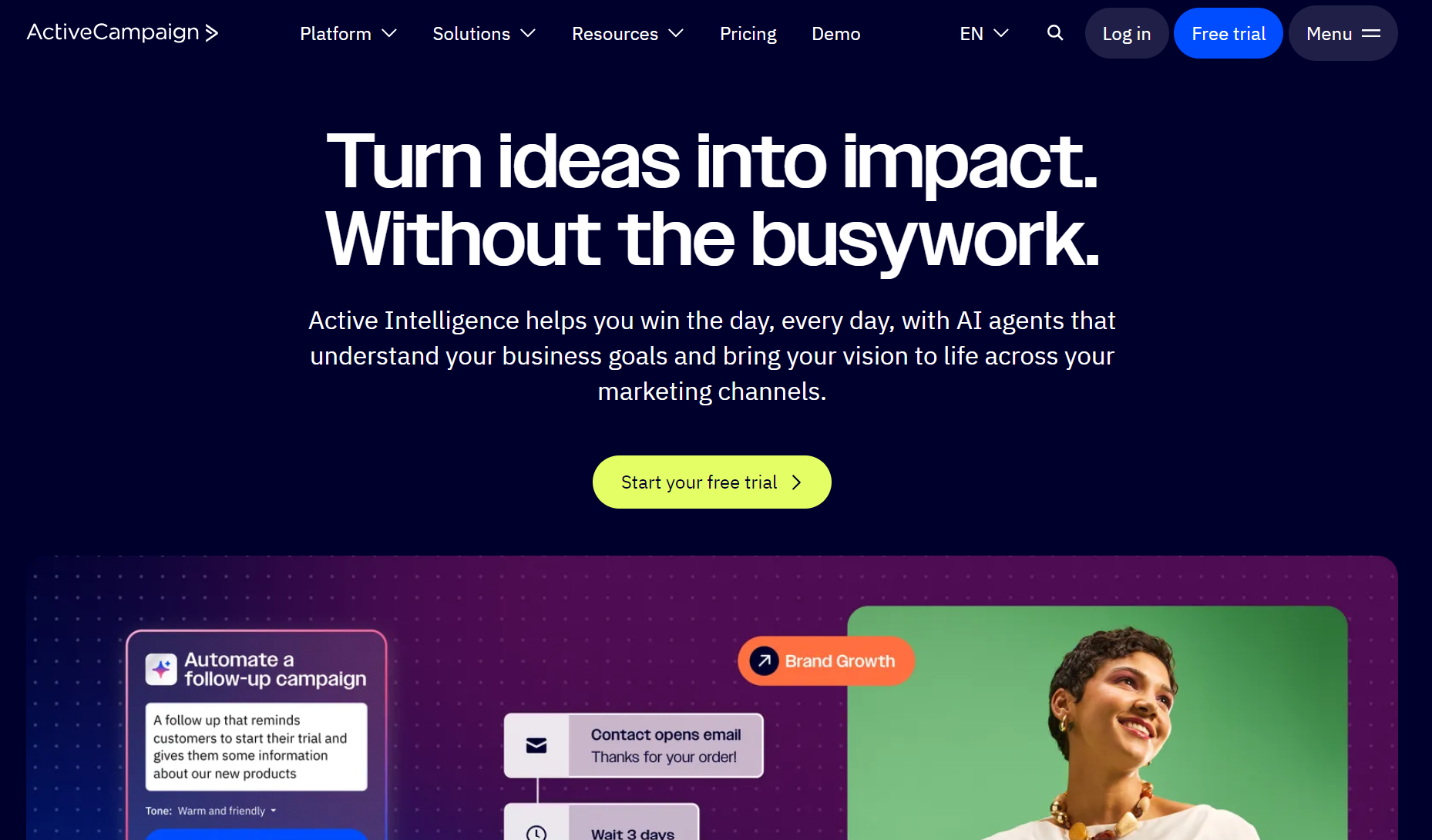
Email marketing finally talks to sales. ActiveCampaign merges CRM and automation so your marketing knows what sales is doing and vice versa. Lead scores trigger automations. Deal stages activate sequences. Sales calls update marketing workflows. Everything connects.
The platform learns from your data obsessively. Send times adjust per person based on their habits. Content recommendations shift based on what converts each segment.
Build workflows as complex as your business, branch-based on any behavior, purchase history, or score. Your weird edge cases? Covered.
Sales and marketing alignment stops being a buzzword when both teams work from the same data. Marketing qualified leads flow to sales with full context. Sales activities feed data back to marketing for nurture campaigns.
Key automation features
- Predictive sending and content
- Site tracking for behavioral triggers
- Split automations with unlimited conditions
- Goal tracking within workflows
- Attribution reporting across touchpoints
Pricing
- Marketing Lite: $15/month for 1,000 contacts
- Marketing Plus: $49/month (includes CRM)
- Enterprise: Custom pricing
Best for
ActiveCampaign works best if you need your marketing and sales teams operating from the same playbook.
3. Klaviyo
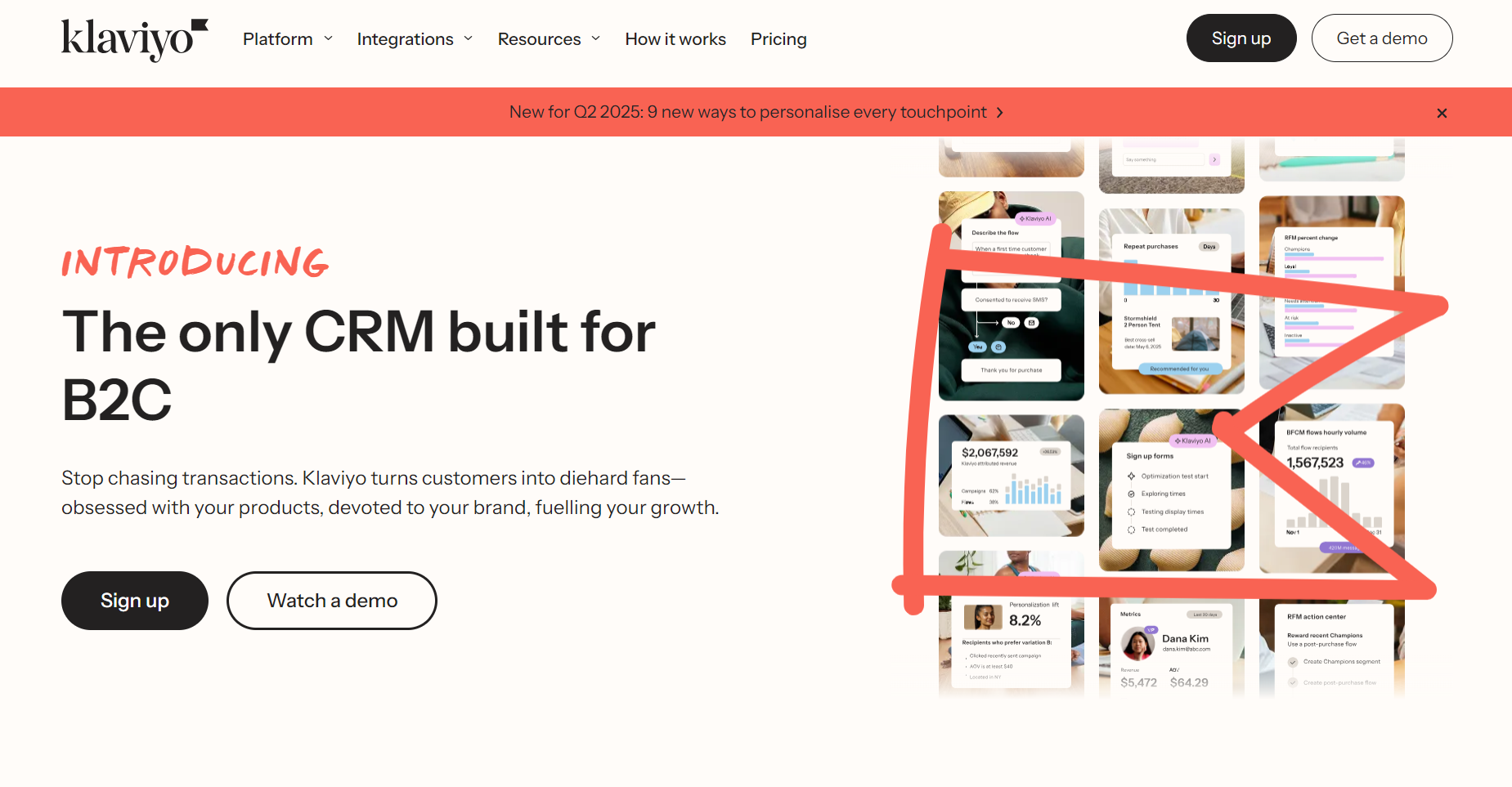
Data nerds rejoice. Klaviyo turns customer analytics into automated action without data science degrees. Predictive models calculate lifetime value, spot churn risks, and recommend products, then trigger flows based on these predictions.
Your automations get smarter without manual updates.
Benchmarking changes everything. See how your abandoned cart recovery performs against similar stores in real-time. Underperforming? Klaviyo suggests improvements based on top performers. It’s like having consultants built into the platform.
Ecommerce events trigger flows you didn’t know you needed. VIP tier achievements. Predicted reorder dates. First purchase anniversaries. Back in stock for wishlisted items. RFM segmentation happens automatically — no spreadsheet formulas required.
Key automation features
- Predictive analytics for CLV and churn
- Smart send time optimization
- Product recommendation engine
- Benchmarking against similar stores
- Revenue-focused reporting
Pricing
- Free: Up to 250 contacts
- Email: From $20/month for 500 contacts
- Email & SMS: From $35/month
Best for
You’ll appreciate Klaviyo most when you want data-driven decisions but lack information about your customer journey.
4. HubSpot
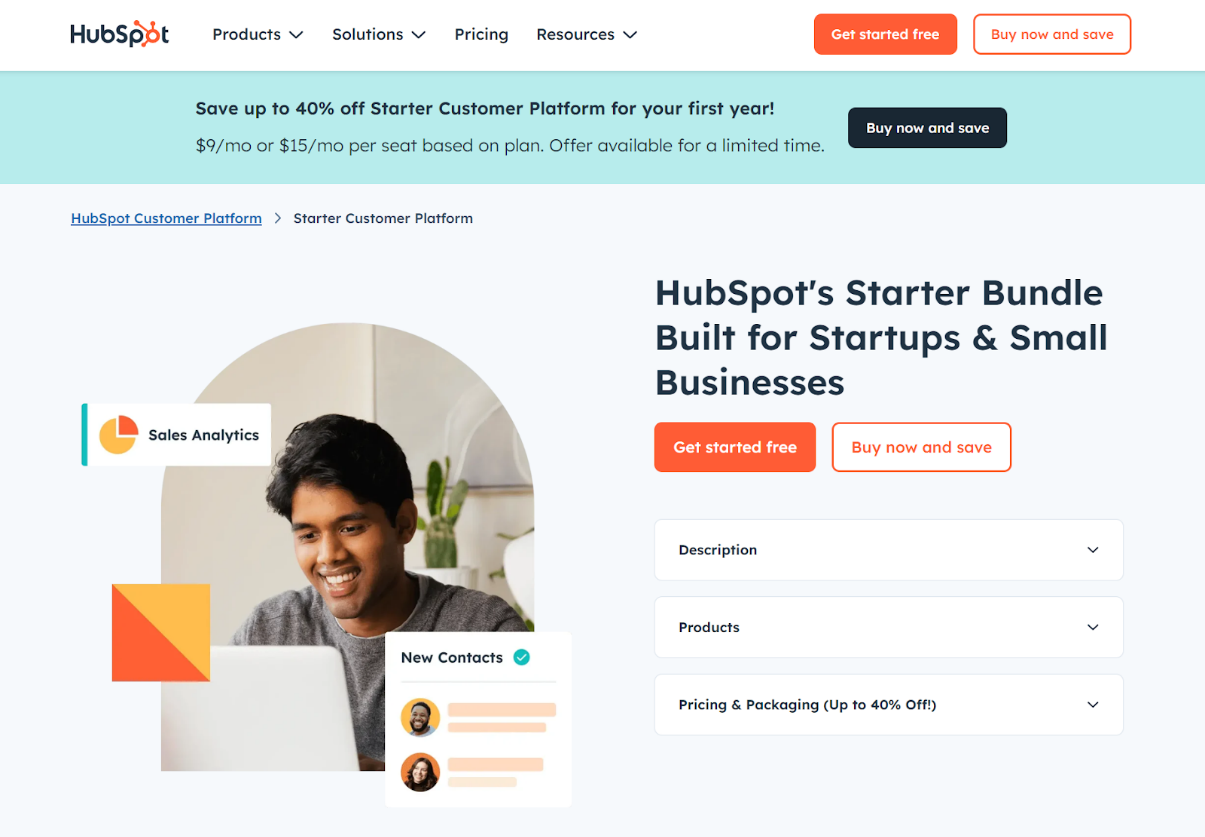
Marketing automation becomes business automation. HubSpot connects everything — marketing emails know about support tickets, sales calls trigger nurture sequences, website behaviour updates deal stages. No more “integration” headaches because it’s all one system. Just like market making software streamlines liquidity and trading processes in finance, HubSpot streamlines every touchpoint in your business for seamless operations.
Workflows handle marketing and operations equally well. Route leads to reps based on engagement. Update properties from form submissions.
Trigger Slack notifications from deal changes. Create tasks from email opens. The same builder manages customer journeys and internal processes.
The free tier does something useful. Small teams can start with basic email automation, then add capabilities as they grow. No platform migrations when you scale — unlock more features. Smart for bootstrapped startups.
Key automation features
- Unified CRM with marketing automation
- Lead scoring and lifecycle stages
- Smart content personalization
- Multi-touch attribution reporting
- Workflow templates for common scenarios
Pricing
- Free: Basic email marketing
- Starter: From $20/month
- Professional: From $800/month
Best for
Consider HubSpot if you’re tired of juggling disconnected tools and want everything under one roof.
5. Mailchimp
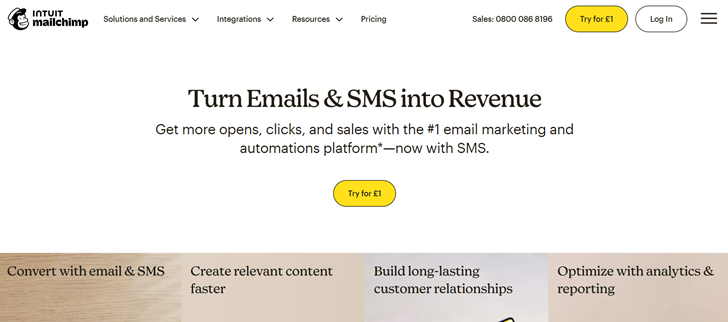
Everyone’s first email platform grew up. Mailchimp added serious automation without losing the simplicity that made it famous.
Its Customer Journey Builder visualizes complex flows in plain English. AI suggestions help — subject lines that perform, content that converts, and optimal send times per subscriber.
Recent additions blur channel lines. SMS joins email naturally. Social posts schedule alongside campaigns. Product recommendations pull from your catalog automatically. Still feels like Mailchimp, just more capable.
The platform shines for straightforward automation. Complex conditional logic exists, but it isn’t the focus. Perfect for teams who need reliable basics done well, not enterprise complexity.
Key automation features
- Customer Journey Builder
- Behavioral targeting
- Product recommendations
- Send time optimization
- Basic SMS capabilities
Pricing
- Free: Up to 500 contacts
- Essentials: From $13/month
- Standard: From $20/month (includes automation)
Best for
Mailchimp works best if you value simplicity over advanced features and need something your whole team can use.
6. Drip

Revenue per subscriber drives every feature. Drip shows exactly what each person spends, how often they buy, and average order values, then builds automations around these metrics. Your flows treat $500 customers differently from $50 customers automatically.
Tags replace lists entirely. Apply unlimited tags from any trigger, then segment using Boolean logic. “Purchased red shoes” AND “Lives in California” BUT NOT “Unsubscribed from SMS.” Complex targeting stays manageable.
Facebook Custom Audiences sync without CSV exports. Your email segments become ad audiences instantly. Retarget cart abandoners on Facebook while email sequences run.
Key automation features
- Visual workflow builder
- Revenue tracking per contact
- Tag-based organization
- Multi-channel workflows
- Facebook Custom Audiences sync
Pricing
- From $39/month for 2,500 contacts
- All plans include unlimited emails
Best for
You’ll appreciate Drip when you realize customer value varies wildly, and you need automations that adapt accordingly.
7. Brevo
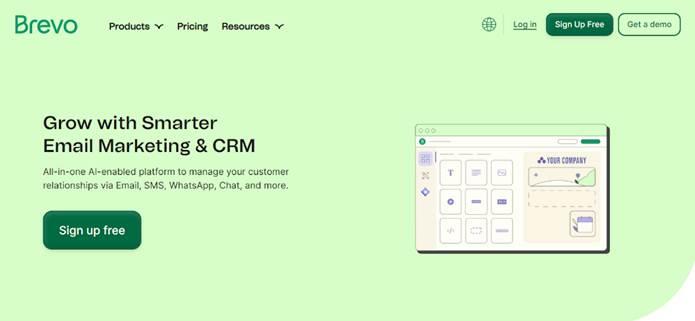
Transactional meets promotional on one platform. Your order confirmations and marketing campaigns share data, templates, and analytics. Welcome emails reference recent purchases. Abandoned cart sequences know the shipping details. Everything connects.
WhatsApp brings automation beyond email and SMS. Build sequences across all three channels from one interface. Built-in CRM tracks deals without separate subscriptions. The transactional API handles millions of sends, critical when every order needs confirmation.
Pricing stays predictable. No contact limits mean you pay for sends, not list size. Growing lists don’t blow budgets. Transactional emails don’t count against marketing limits. Sensible for high-volume senders.
Key automation features
- Transactional email API
- WhatsApp campaigns
- Built-in CRM
- Lead scoring
- Landing page builder
Pricing
- Free: 300 emails/day
- Starter: From $9/month
- Business: From $18/month
Best for
Consider Brevo if you send tons of transactional emails and hate paying for separate systems.
8. GetResponse
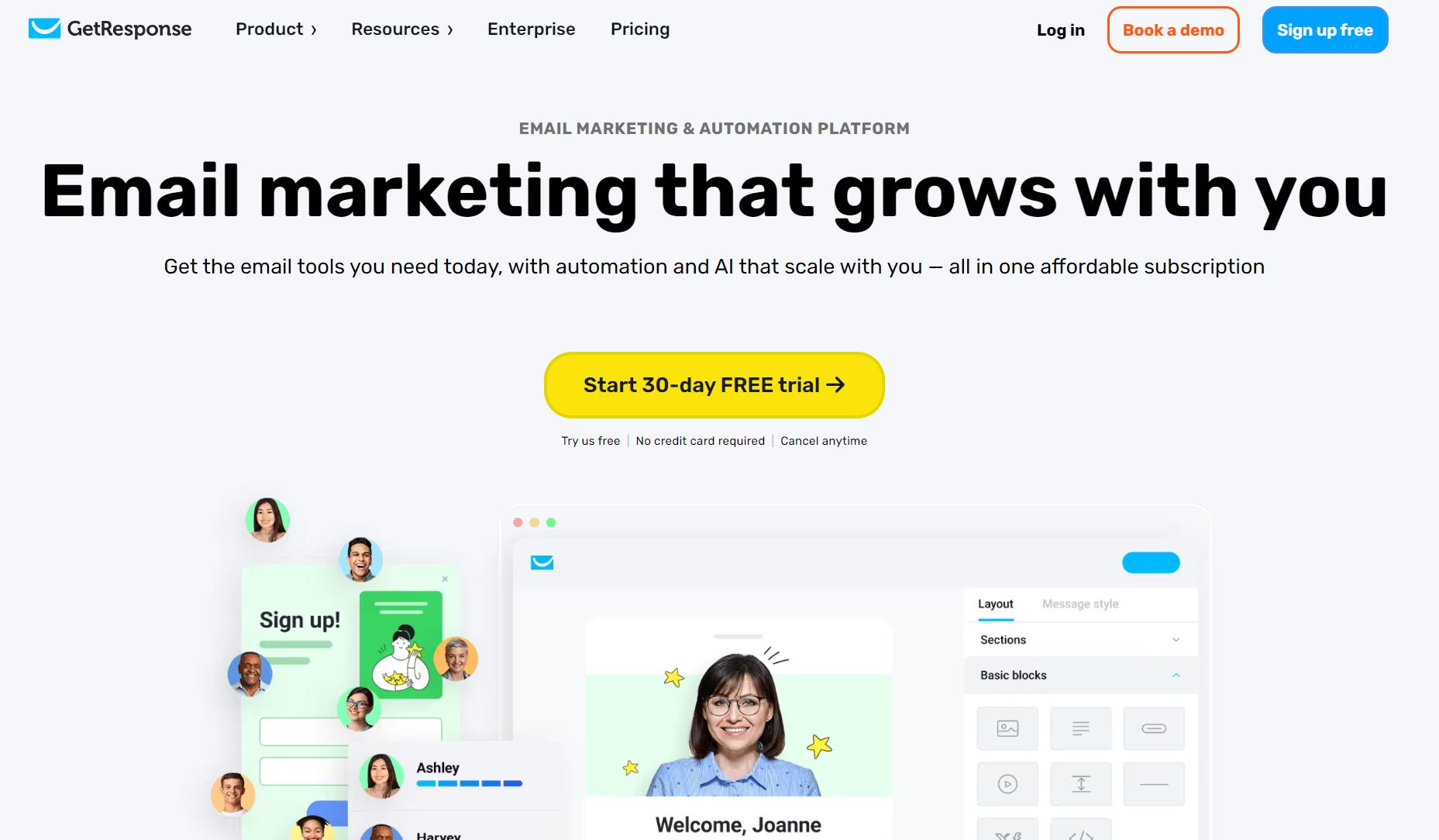
Everything from the landing page to payment happens inside GetResponse. Build funnels that close deals — capture pages, feed automation sequences, webinars, nurture relationships, and built-in checkout processes for orders.
Webinar automation sets GetResponse apart. Promote events through email sequences. Send customized reminders. Follow up based on attendance.
Replay links go to no-shows automatically. Webinar engagement triggers sales sequences. Perfect for education-based selling.
The all-in-one approach includes surprises. Basic online course creation. Simple membership sites. Even payment processing. Not best-in-class for each feature, but good enough to skip multiple subscriptions.
Key automation features
- Conversion funnel builder
- Webinar integration
- Basic ecommerce tools
- Web push notifications
- Automation templates
Pricing
- Free: Up to 500 contacts
- Email Marketing: From $19/month
- Marketing Automation: From $59/month
Best for
GetResponse works best if you sell education and need webinars integrated with your email flows.
Final thoughts
Most automation failures happen because teams pick platforms based on demos instead of daily workflows. That amazing AI-powered predictive sending means nothing if your team struggles with basic campaign setup.
Start where you are. Need simple cart recovery emails? Don’t buy enterprise automation. Running complex B2B funnels? Skip the beginner platforms. The gap between your current process and your platform’s complexity determines success more than any feature list.
Related: Discover more email marketing platforms.

